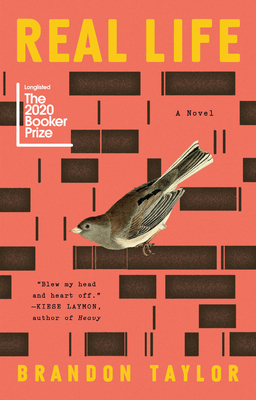 REAL LIFE
REAL LIFE
by Brandon Taylor
Riverhead Books. 327 pages, $26.
BRANDON TAYLOR’S debut novel Real Life is a powerfully moving account of the life of Wallace, a gay, black biochemistry graduate student in Wisconsin. Over the course of a weekend, Wallace has sex with a straight friend, Miller, has a tense discussion with a fellow student who may have sabotaged his experiments, and reveals the infidelity of another friend’s boyfriend to their group. Meanwhile, Wallace deals with the many small but painful micro-aggressions that occur throughout his day, comments that even his friends can make that he must either ignore or bring to their attention, risking unpleasantness.
Wallace is a complex character who keeps his emotions bottled up even to his friends, whom he has known since arriving from Alabama. He only shares with a couple of them that his father died a few months ago and that he didn’t go to the funeral. At a party, he cunningly reveals his friend’s concerns about his boyfriend, which leads to an awkward moment, after which he laughs and eats so much that he throws up.
Because the book is told from Wallace’s perspective, the reader soon learns that he does indeed have emotions; he just doesn’t choose to share them with anyone. At the dinner party, a friend makes a cruel remark about him, which everyone pretends not to notice. Near the novel’s end he confesses to Miller: “I’m angry all the time, and it doesn’t matter,” because “no matter what I do, it can’t change the thing I’d like it to change.”

Even Wallace’s developing relationship with Miller only serves to complicate his situation, with feelings and misunderstandings passing back and forth between the two friends. Wallace briefly gets jealous of a woman that his friends—unaware of Wallace and Miller’s hookup—have set up as a date for Miller. The two men reveal their past lives to each other: Wallace shares the sexual abuse he suffered as a child and his father’s abandoning the family; Miller recounts his attack on another young man for a slight. This account leads to a shocking scene in which Wallace goads an anxious Miller into attacking him, ending in rough sex, with Wallace leaving deep scratches on the other man’s body even while being struck by him. Afterwards, “stiff and bruised and covered in dry blood,” Miller tries to discuss what happened, but Wallace refuses, saying: “It’s a part of us now. It’s part of our history.”
Told in present tense, the novel captures in ten chapters the experience of many people of color who must negotiate the casual racism that they experience daily and that white friends and coworkers often tend to minimize or deny. Wallace calls it “the shadow pain … because to say its real name would be … to draw attention to it, as though it weren’t in everything already.” Real Life arrives at an important moment in our ongoing national conversation—now a global one—about race and racism in American society.
Charles Green is a writer based in Annapolis, Maryland.






